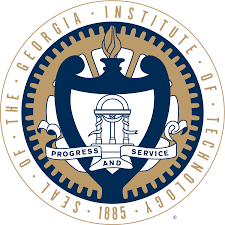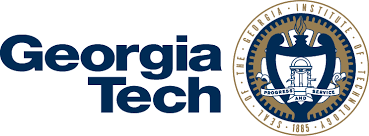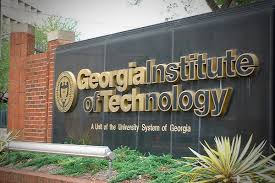Julia Kubanek, associate professor of chemistry at Georgia Tech in Atlanta
Georgia Institute of Technology
177 North Avenue NW
Atlanta, Georgia 30332 USA
177 North Avenue NW
Atlanta, Georgia 30332 USA
MEDIA RELATIONS CONTACTS:
1.Georgia Tech, gtresearchnews@gatech.edu
TECHNICAL CONTACTS:
TECHNICAL CONTACTS:
1. Julia Kubanek, Georgia Tech, 404-894-8424, or E-mail: julia.kubanek@biology.gatech.edu
Education:
B.S., Chemistry, Queen's University, 1991; Ph.D. Organic Chemistry, University of British Columbia, 1998
Awards:
NSF CAREER Award 2002; PECASE Award 2004; Georgia Tech Blanchard Assistant Professorship 2005; Georgia Tech Hesburgh Teaching Fellow 2007; Georgia Tech College of Sciences Faculty Mentor Award 2009; Georgia Tech Faculty Woman of Distinction Award 2009; University of Gothenburg Waernska Guest Professorship 2010; Georgia Tech Sigma Xi Best Faculty Paper Award 2010; Silverstein-Simenone Award of the International Society of Chemical Ecology 2012; Elected Fellow of the AAAS 2012
Research Interests:
Most organisms use chemical signals to assess their environment and to communicate with others. Chemical cues for defense, mating, habitat selection, and food tracking are crucial, widespread in occurrence, and structurally and functionally diverse. Yet, our knowledge of chemical signaling is patchy, especially in marine environments. Processes such as oceanic primary production affect global climate, human health, and our sustainable use of environmental resources. In our research the Kubanek group asks, "How do marine organisms use chemicals to solve critical problems of competition, predation, disease, and reproduction?" We use an integrated approach to understand how marine natural products function as chemical cues in ecological interactions - working from the molecular to the community level. We also use ecological insights about how marine organisms use chemical cues to guide our discovery of novel natural products for drug discovery. We have core collaborations with research groups at Georgia Tech's Center for Aquatic Chemical Ecology, in which our group plays key roles as organic chemists, chemical ecologists, and chemical biologists. Ongoing projects include: 1) Waterborne chemical cues in the marine plankton: a systems biology approach (including metabolomics); 2) Exploration, conservation, and development of marine biodiversity in Fiji (including drug discovery, mechanisms of action, and chemical ecology); 3) Sensory environment and predator chemical signal properties in determining non-consumptive effect strength in cascading interactions on oyster reefs; 4) Regulation of red tide toxicity by chemical cues from marine zooplankton; 5) Chemoreception of prey chemical defenses on tropical coral reefs.
Journal Advisory Board Membership(s):
Journal of Chemical Ecology – editorial advisory board
Marine Drugs – editorial advisory board
Recent Publications
scientists have discovered that seaweeds defend themselves from specific pathogens with naturally occurring antibiotics.
| ||||
The finding helps explain why some seaweeds, sponges and corals appear to avoid most infections by fungi and bacteria, according to a study published May 19 in the Proceedings of the National Academy of Sciences.
"Seaweeds live in constant contact with potentially dangerous microbes, and they have apparently evolved a chemical defense to help resist disease," said lead author Julia Kubanek, an assistant professor of biology and chemistry at the Georgia Institute of Technology in Atlanta. "These plants have a really effective way of defending themselves."
Few studies have addressed disease resistance in seaweeds, and seaweed diseases are little understood, except for species that are commercially important -- for example, the seaweed used for sushi. This study's report of isolating a potent antifungal compound contained in the common seaweed speciesLobophora variegata reveals an unusual chemical structure not seen before in plants.
Some other survey findings: 77 percent said significant numbers of women and minorities are missing from the U.S. science, technology, engineering and math work force today because they were not identified or encouraged early on. Nearly two-thirds believe that under-representation of women and minorities in those fields threatens the United States' global competitiveness.
"I feel like I've been increasingly encouraged as the years have gone by, but I didn't always feel as actively encouraged," said Julia Kubanek, associate professor of chemistry at Georgia Tech in Atlanta.
"My friends were nerdy like me in high school. But I do remember peer influences about what girls should be," said Kubanek. Fortunately, she said, she had very supportive parents.
While some of her undergraduate classes were about a third women, others were 80 percent male. She earned her doctorate in organic chemistry from the University of British Columbia, Canada, in 1998.
Kubanek's career, specializing in chemical ecology, has soared. In 2004, she was recognized with a Presidential Early Career Award for Scientists and Engineers, a top honor for research scientists.
But as an adviser to female graduate students, she still sees roadblocks during critical periods of their training.
"Female Ph.D.s really feel burned out," said Kubanek.
They often decide to get out of academics.
"I've heard them say, 'I'm just going to take a job; just a job, so I can have a family and a life. I'll gladly hand over the better opportunity to my spouse,'" said Kubanek. "They decide to do something more personally predictable, but less satisfying."
"The language of chemistry in the natural world has been around for billions of years, and it is crucial for the survival of these species," said Julia Kubanek, an associate professor in Georgia Tech’s School of Biology and School of Chemistry and Biochemistry. "We can co-opt these chemical processes for human benefit in the form of new treatments for diseases that affect us."
More than a million people die each year from malaria, which is caused by the parasite Plasmodium falciparum. The parasite has developed resistance to many anti-malarial drugs and has begun to show resistance to artemisinin -- today's most important anti-malarial drug. The stakes are high because half the world's population is at risk for the disease.
A Search for Solutions
Many government research grants that universities rely on don't provide sick days or maternity leave. Kubanek has successfully worked with female grad students to find some solutions, such as other sources of funding so that women who need a short leave don't have to quit the programs they are in.
Kubanek said some older male scientists still carry prejudice toward women, but that is harder to get away with.
"Male colleagues who exhibit hostility are increasingly isolated or marginalized. Their hostility is not accepted by the mainstream anymore," she said.
Mary Frank Fox has been working on issues of gender and science since 1993, also at Georgia Tech. Whether in an academic or corporate environment, she said there are plenty of ways to recruit, retain and promote women in science.
"If they want to make it happen, it can happen. It takes an organizational will and organizational means," said Fox, a sociology professor in the School of Public Policy and co-director of the Center for the Study of Women, Science and Technology.
Fox said the number of doctoral degrees awarded to women in physical sciences is improving. It was 15 percent from 1980-1989, 21 percent from 1990-1999 and 26 percent from 2000-2005.
"In degrees awarded to women at the highest level, there are indicators of notable progress," said Fox. Yet, the proportion of female full professors in those fields is still less than 7 percent.
Bales, who is now a vice president at NeuroPhage Pharmaceuticals, based in Cambridge, Mass., said that in the corporate world, equal opportunity is a mindset that must come from the top.
She spent 10 years as a senior director in regulatory affairs for Genentech, a pioneering company in biotechnology.
"When I was there they really went out of their way to make sure people were getting mentored," she said. Their policy, she added, was that it was not wise to tolerate sexism.
 Julia Kubanek, associate professor with a joint appointment in chemistry & biochemistry and biology, was awarded a Waernska Guest Professorshipat the University of Gothenburg, Sweden. She will be resident on campus in Sweden from March to July 2010 to study marine chemical ecology in the cold waters of Skagerak adjacent to the North Sea more info
Julia Kubanek, associate professor with a joint appointment in chemistry & biochemistry and biology, was awarded a Waernska Guest Professorshipat the University of Gothenburg, Sweden. She will be resident on campus in Sweden from March to July 2010 to study marine chemical ecology in the cold waters of Skagerak adjacent to the North Sea more info






An aerial view of the Georgia Tech campus in Midtown Atlanta

The campus is located on 400 acres in Midtown Atlanta, an area known as the cultural center of the state's capital city. Georgia Tech's park-like ...


An aerial view of the Georgia Tech campus in Midtown Atlanta
The campus is located on 400 acres in Midtown Atlanta, an area known as the cultural center of the state's capital city. Georgia Tech's park-like ...
